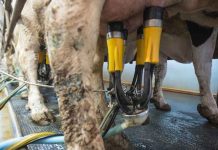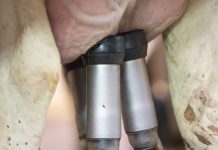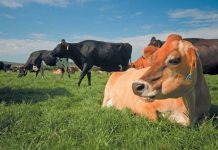New Zealand’s city-centric Labour government is to set a limit on how many dairy cows a farmer can run.
Environment Minister David Parker says that government will implement regulations to reduce the number of cattle farmers are allowed per hectare.
“That won’t be done through a raw cap on cow numbers; it will be done on nutrient limits, the amount of nutrient that can be lost from a farm to a waterway, because it’s not just a dairy cow issue,” he said on Television New Zealand.
Dairy New Zealand figures show that 4,8 million cows, averaging three cows a hectare, produce 20,7 billion litres of milk a year, 3% of the world total.
Dairy is New Zealand’s largest export, at about NZ$14 billion (R122,9 billion).
But Parker says there are too many cows. “Cow numbers have already peaked and are going down but, in some areas, the number of cows per hectare is higher than the environment can sustain.”
There will be no compensation for farmers. “You don’t compensate people for stopping pollution,” he says. “Just because you could pollute last year doesn’t mean to say you should be allowed to do it or paid to stop doing it.”
The economic impact is unknown. “We haven’t done an analysis of what the economic effects would be,” Parker says. “It’s very, very difficult to model.”
An opinion poll commissioned by environmental group Greenpeace found 52% of New Zealanders think there are too many cows for waterways to handle. Only 16% felt cow numbers could continue to grow.
Lincoln University senior lecturer in agribusiness management Nic Lees says dairy cannot continue with business as usual; intensive ‘dairying’ was profitable only because it was not bearing the full costs of its production systems.
“It is not paying the cost to the environment of its production. We are all picking up the tab,” said Lees.
AgResearch Institute science impact leader Robyn Dynes says while reducing stock numbers is one approach, there is no ‘one size fits all’.
“It is important to recognise that every farm is different and has a different capacity to adapt and change. The risk is that if changes are made without all issues being considered, we could end up with unforeseen problems down the line.”
Opposition leader Simon Bridges says the proposals have been made without analysis.
“Just culling the cows, when you haven’t got a plan around that, and you don’t have other viable industries coming up to take the slack, is a very bad idea indeed. There seems to be a lack of any kind of comprehension that when farmers sneeze, we all catch a cold.”
Parker says increases in land-use intensity will no longer be permitted. “There are some rivers that are getting better; there are some that are still getting worse.
“It’s true that rivers I used to swim in as a child … are a lot dirtier than when I [was] a kid, and that’s not good enough,” he said.





